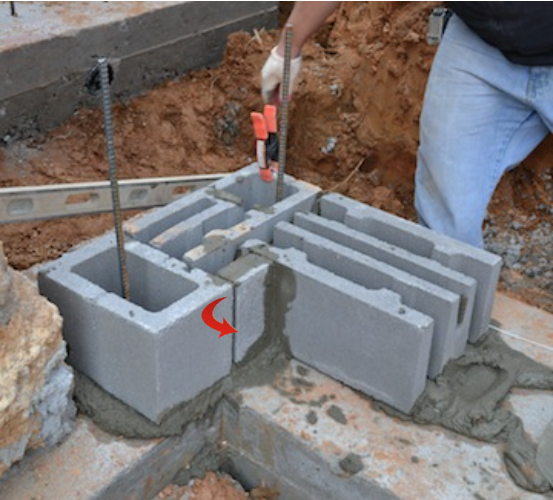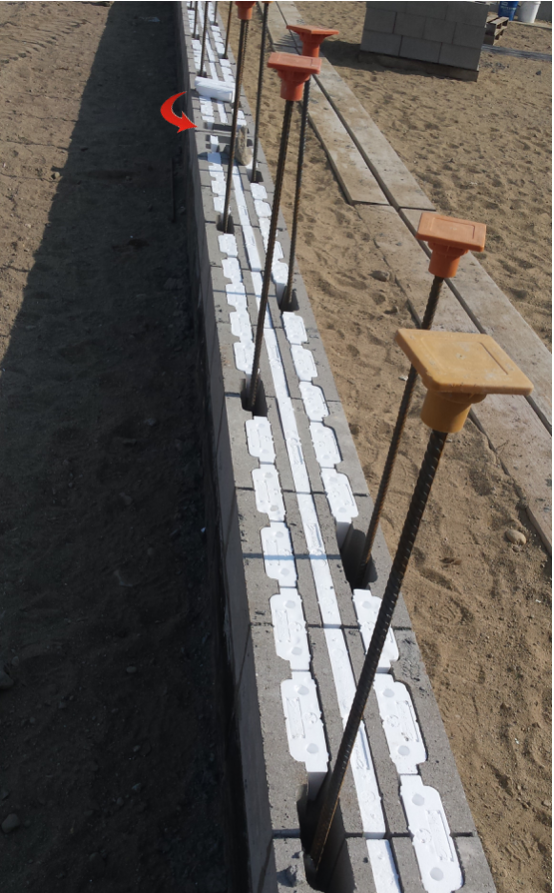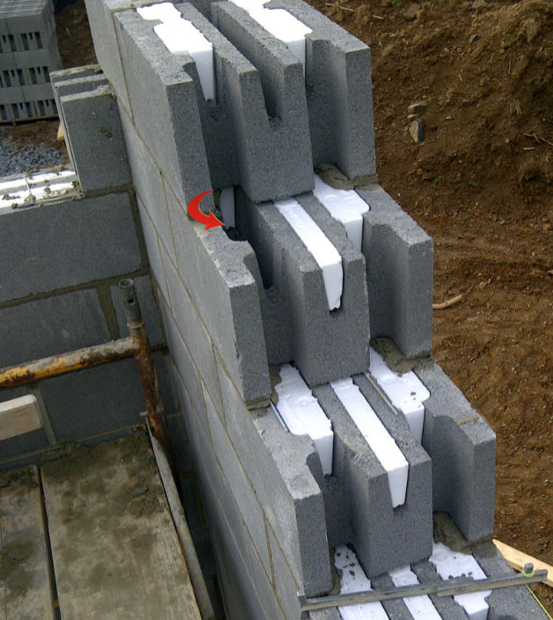CONSTRUCCIÓN CON BLOCK 12" (30 CM)

An 8” Omni Block corner is spotted first at the actual outside corner point of the building. A 12” Omni Block stretcher is then normally placed in both directions from the corner. This photo shows that a door jamb is 24” from the outside corner of the building, so a standard 12″ half block is used in this situation. The red arrow indicates where a “scab” piece (approximately 3 5/8″ x 7 5/8″ piece of block) is then set in mortar to keep the block bond continuous.

If the “best building practice” is to achieve maximum thermal performance, then staggering the rebar from the exterior side to the interior side of the block works very well.
The photo to the left illustrates that the engineer called for the rebar to be placed every 24” to achieve a symmetrical design. This insulation strategy minimizes and extends the direct thermal path between the exterior and the interior. The result is four layers of masonry and three layers of insulation 67% of the time and two layers of insulation 33% of the time.

Typical 12″ corner racked back to allow other masons to fill in the wall to the corner that is also racked back, effectively building speed leads.
The red arrow indicates where a grout cell is located. Rebar is stubbed up from the footing and a vertical rebar will be dropped in the cell before the next grout lift.
Note that mortar is only used under the exterior and interior face shells.

Left photo clearly shows the wall full of insulation, the 8” corner block located at the corner allowing the walls to all stay on block bond.
The insulation inserts slide into their respective cells after each course of block is laid. These 12” block each weighed about 55 lbs.